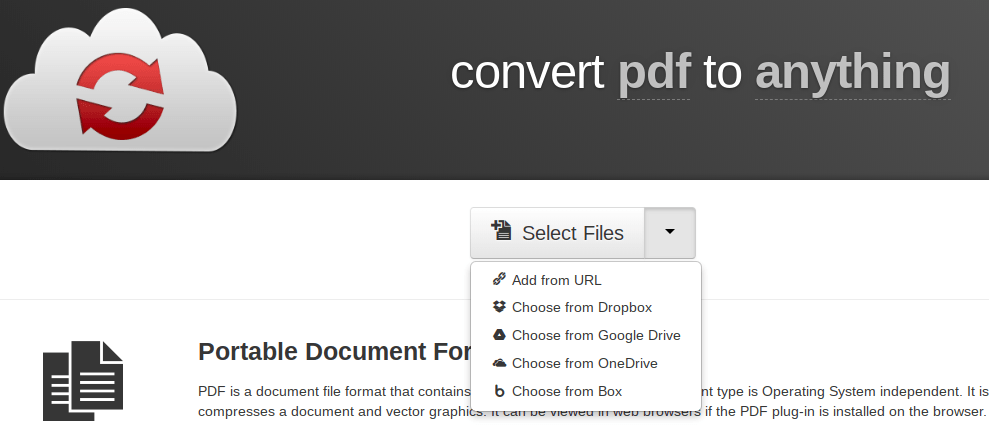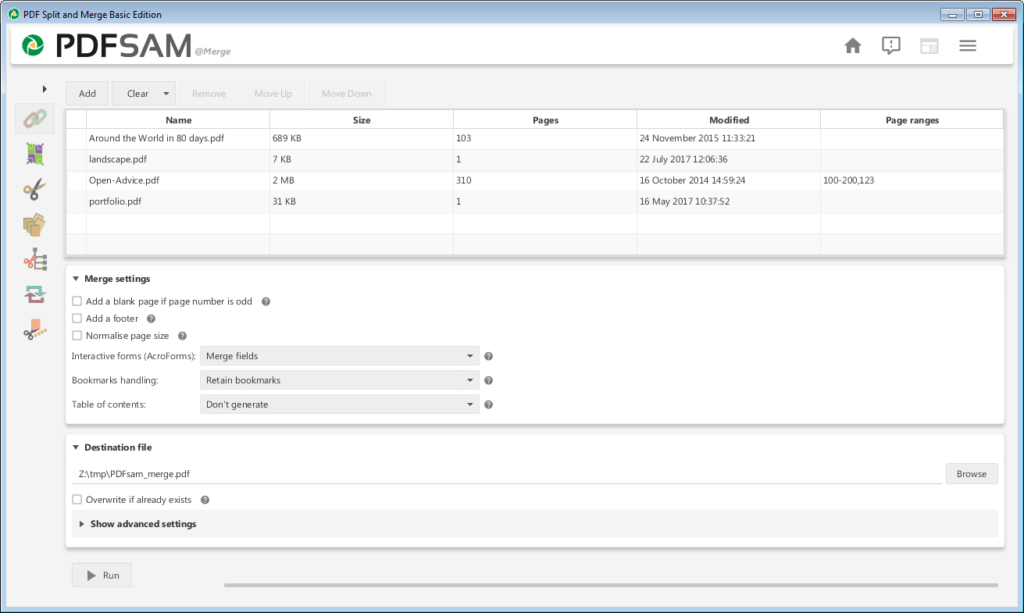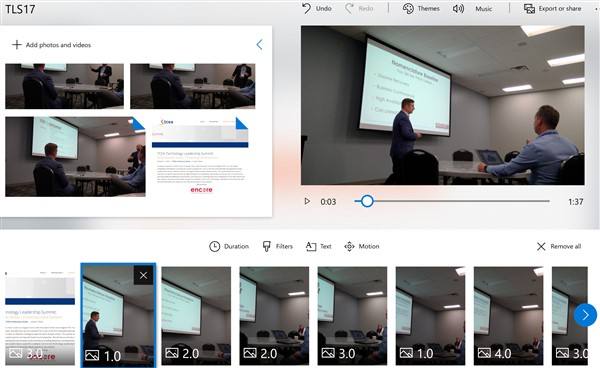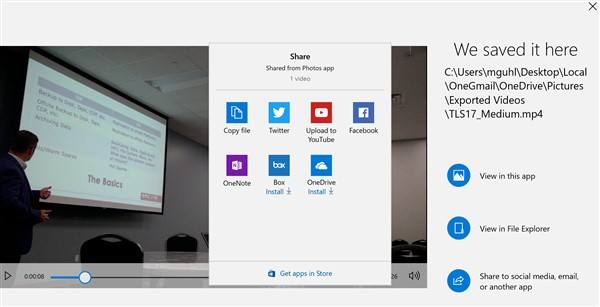If one of your jobs is to provide regular computer support to end users, you have probably experienced this scenario before. You find a product to help you with a problem only to think, “Man, this is garbage!” You later take a second look and see that someone has rebuilt it, polished it, and put it on display and it now makes you scream, “WOW! Where can I get one of these?!” This is how I felt when I saw Quick Assist, formerly Windows Remote Assistance (pre-Windows 10). The theme of the application is the same, but with the improvements, it now shines. And it’s a fantastic tool to use with your district staff (or even if you are called upon to help your parents better use their computers!).
What Is Quick Assist?
Quick Assist is a tool that will allow you to access another Windows computer over a network or using the internet. With the user’s permission, you can control or view their machine to assist them with a problem or issue. I am a practical admin and absolutely love it when things just work. When helping a user, I strive first to work quickly and second to assist them to the best of my ability. Quick Assist is my motto. This tool delivers on its namesake with its quick functionality and ability to assist.
To quickly assist someone without having to jump through hoops and reinvent the wheel is, as you know, priceless– which brings me to my next point. Quick Assist is free for both personal and commercial use since it is native to all Windows 10 operating systems. Other tools are available for free personal use, but they incur a small fee for commercial use. Not the case with Quick Assist.
How to Use Quick Assist
The more I use this tool, the more I love its simplicity. The Quick Assist Windows application can be easily launched by searching for quick assistance utilizing the search function in Windows. Once you start Quick Assist, you will be presented with two options: “Get assistance” or “Give assistance.”
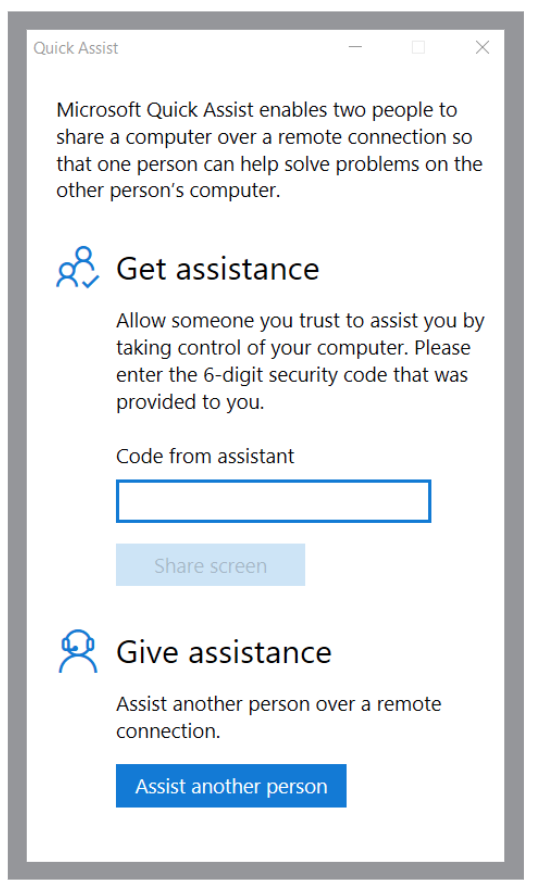
If you want to provide assistance, you will select “Assist another person,” which will generate a unique security code. As the person assisting, you will need to give this code to the user who requires assistance. Instructions are provided for how you can do this if you click “Provide instructions.”
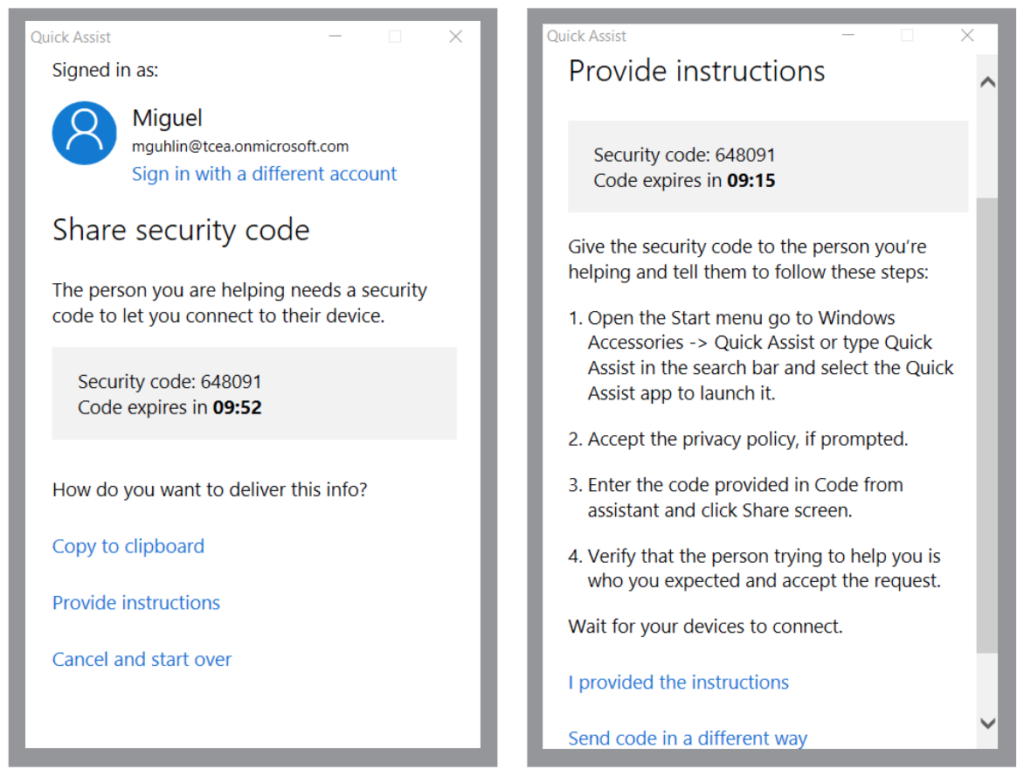
Note: This tool is seamless for users that have Azure or Office 365 organization login credentials. The user receiving assistance is not required to authenticate. They will just need the code that is given by the support person. This provides more of a single sign-on (SSO) experience when launching the tool. If you are doing this from a stand-alone computer, no need to worry; it just takes a little more brainpower to remember your Microsoft credentials. If you do not have Microsoft credentials, you are in luck! You can sign up via the login page for free.
Once logged in, you will be presented with two options for providing assistance: “Take full control” and “View screen.” Once you make your selection, the user being helped will still need to allow you to take control on their end.
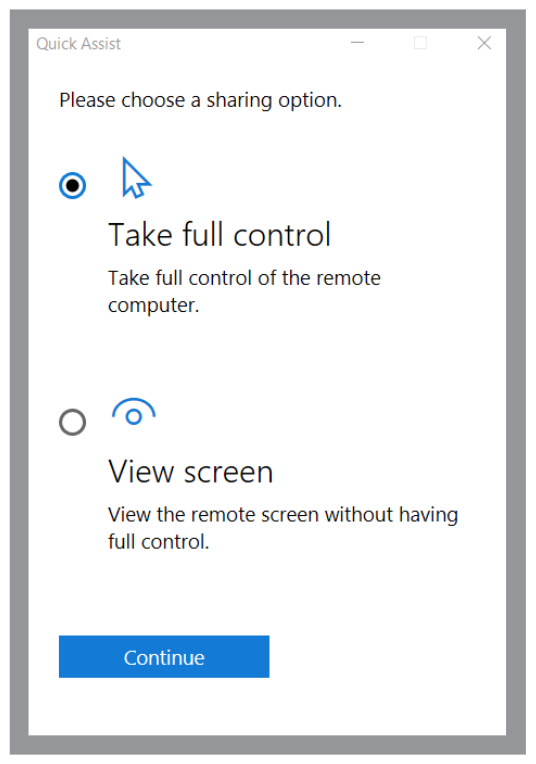
After this step has been completed, the remote session is up and running. But wait! I want to dive just a little deeper and discuss some of the noticeable support tools in the menu.
Quick Assist Menu

The menu has some really great, simple tools. We can easily use it as a training tool with some of the annotation features. Easy come, easy go with a click of the black “End” square on the right side of the menu.
- Select Monitor – Shows all available monitors being used by the user you are helping, and you can target specific ones
- Annotate – Provides you with annotation tools such as pens, etc.
- Actual Size – This will show in the remote res, but will not enlarge on your screen
- Toggle Instruction Channel – Offers a simple chat feature
- Reconnect – Give the option to re-establish the connection
- Task Manager – Allows you to troubleshoot currently running applications
- Pause – Pauses the session
- End – Ends the session
It’s just that easy. I really love things that work. No figuring out IP addresses or searching for computer names is needed! Just on-demand, remote support near and far with no configuration necessary.
Here are some great how-to resources, and here is an excellent Quick Assist video for you.

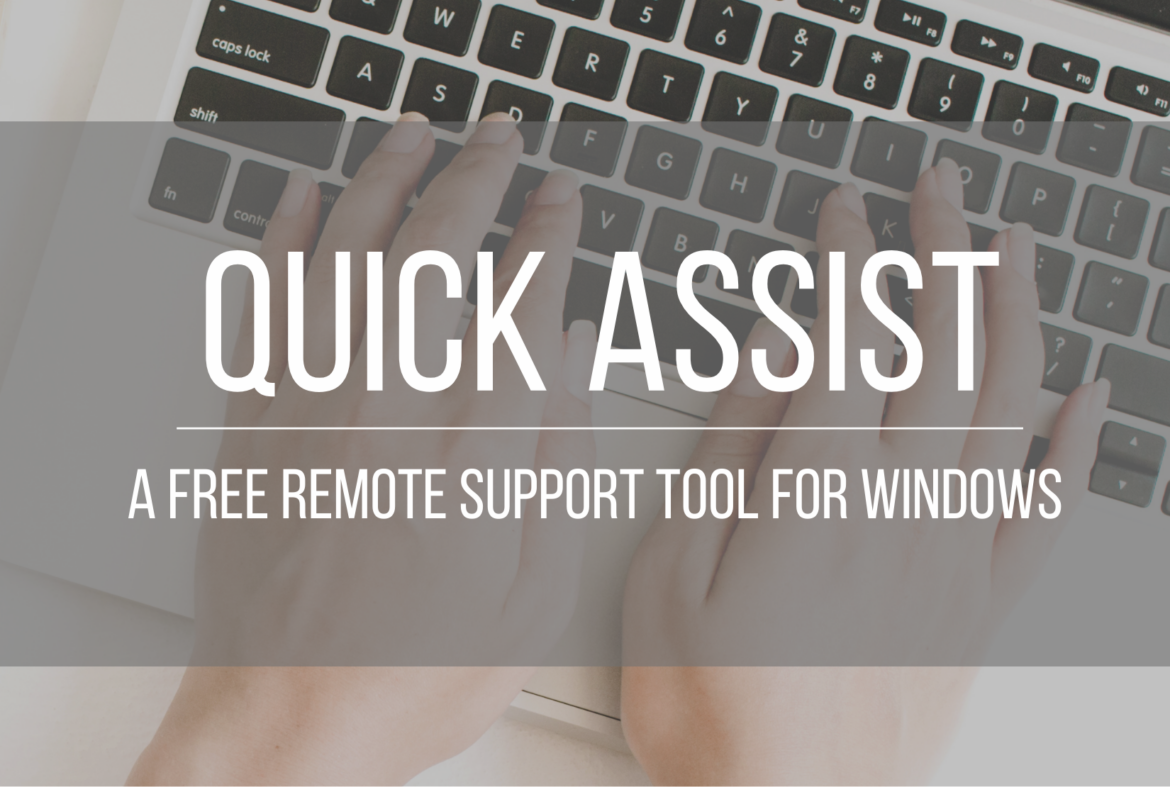
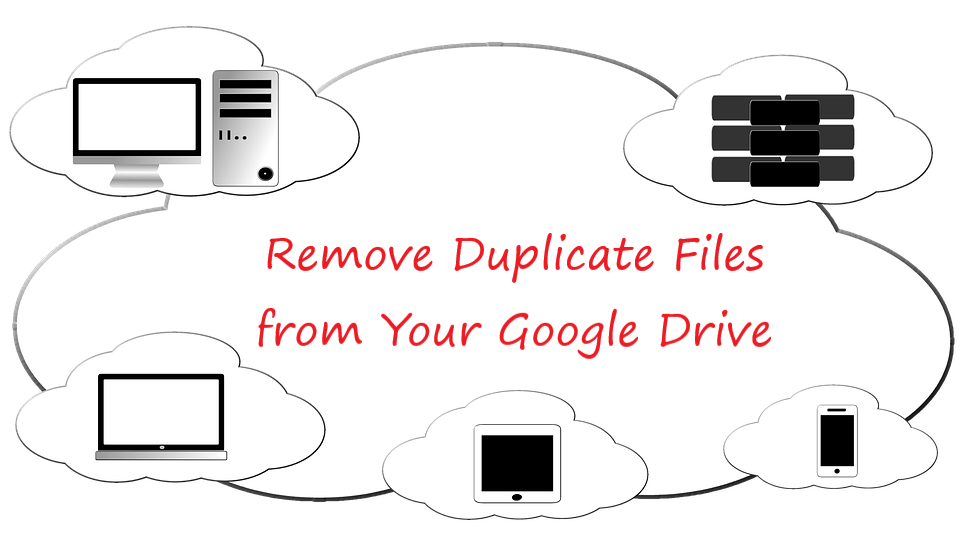

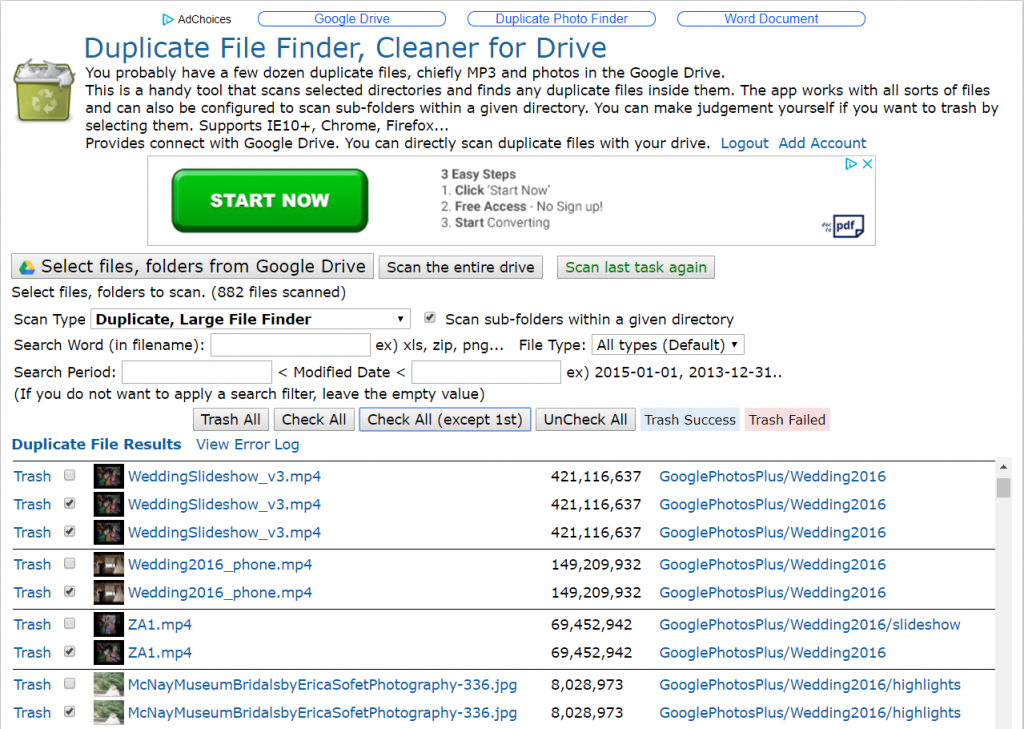
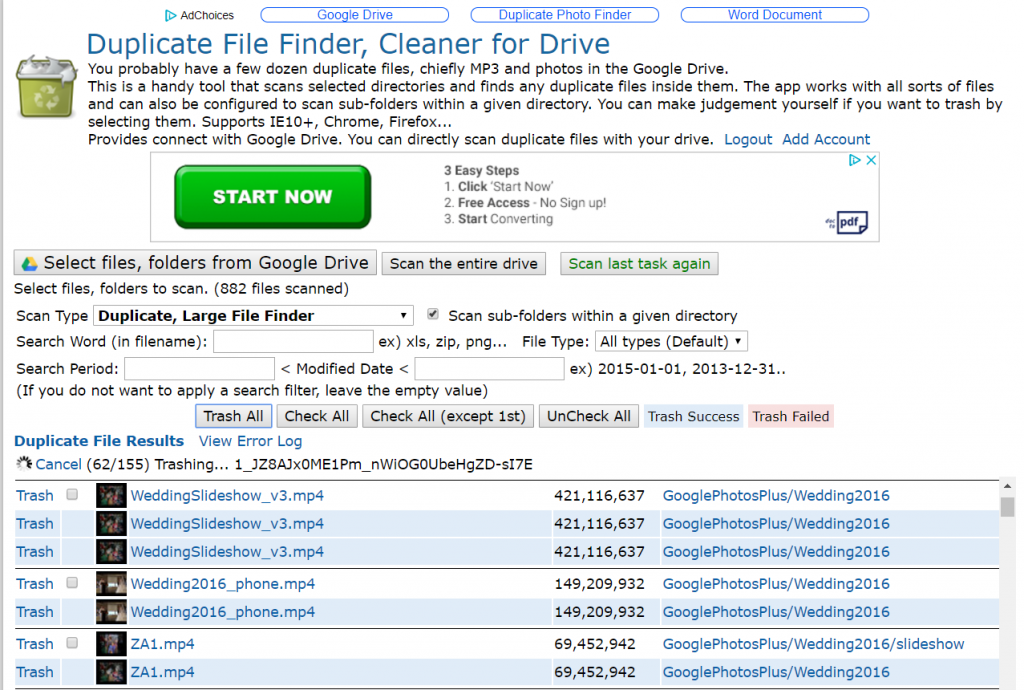
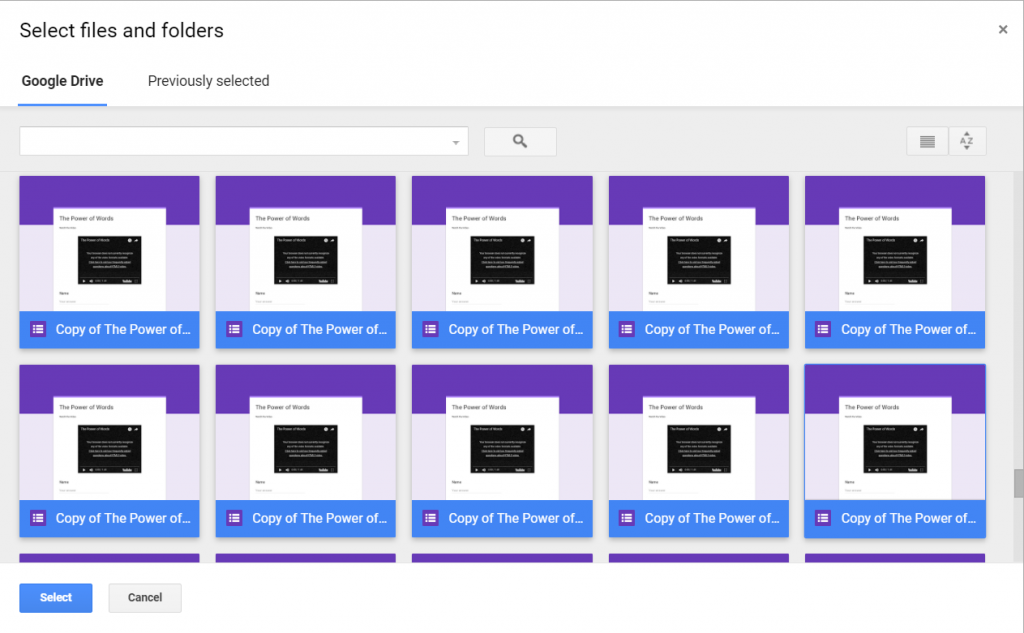
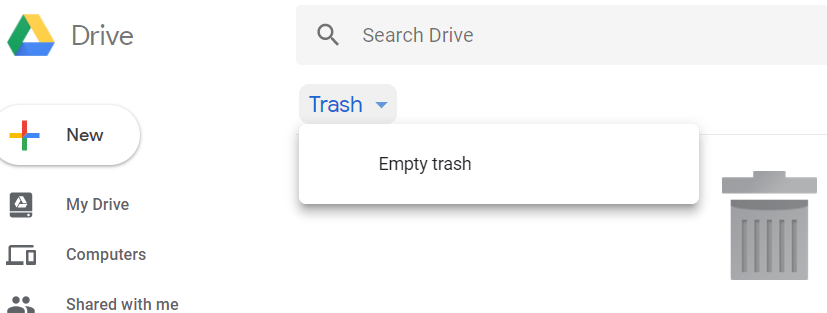

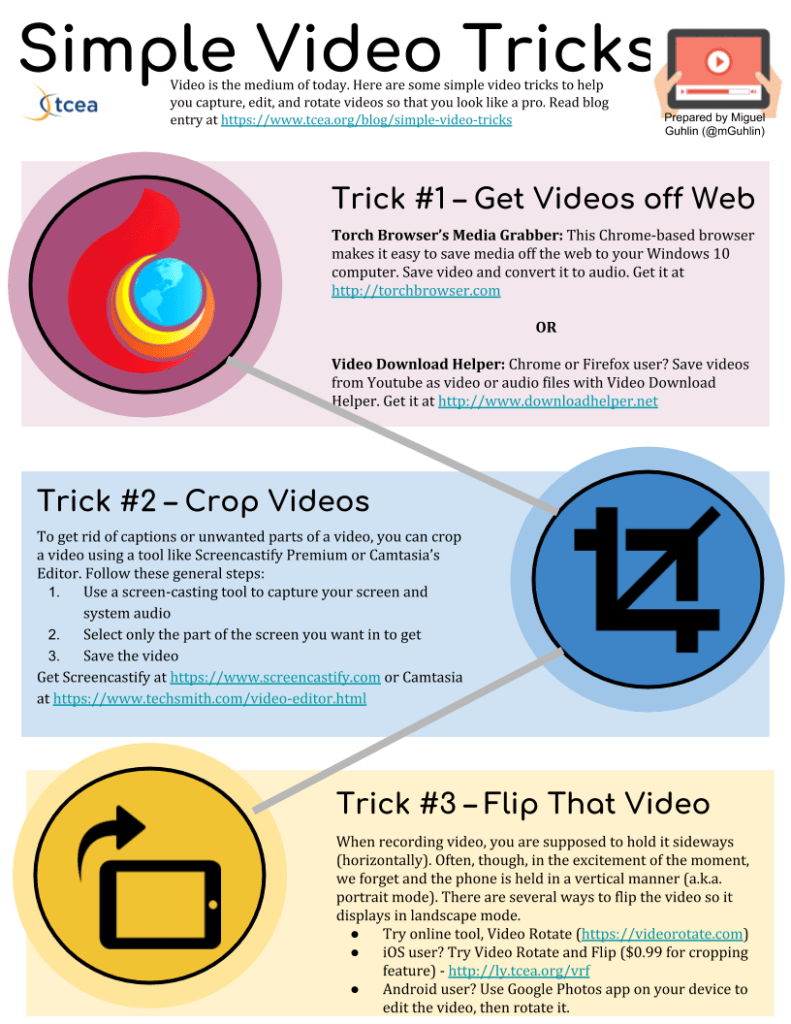

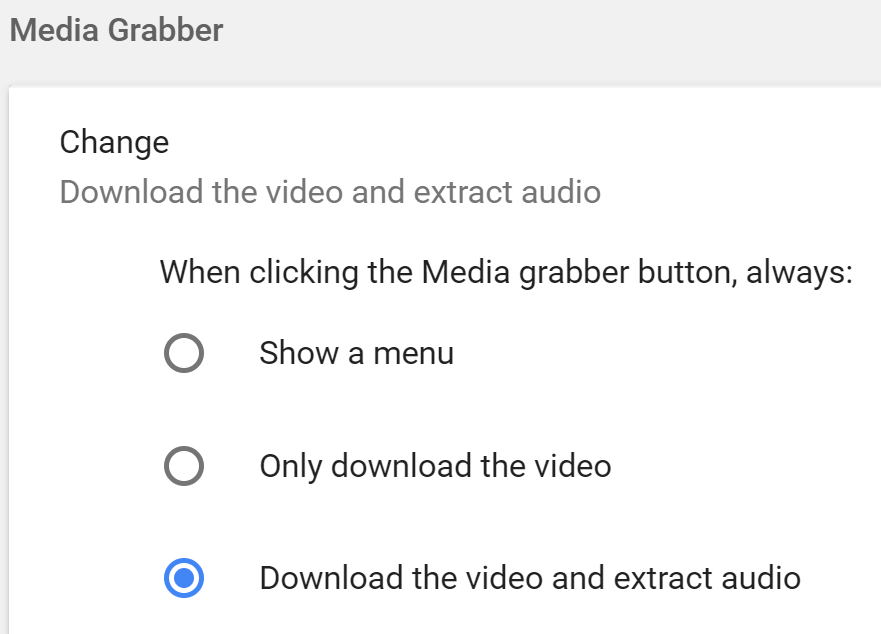
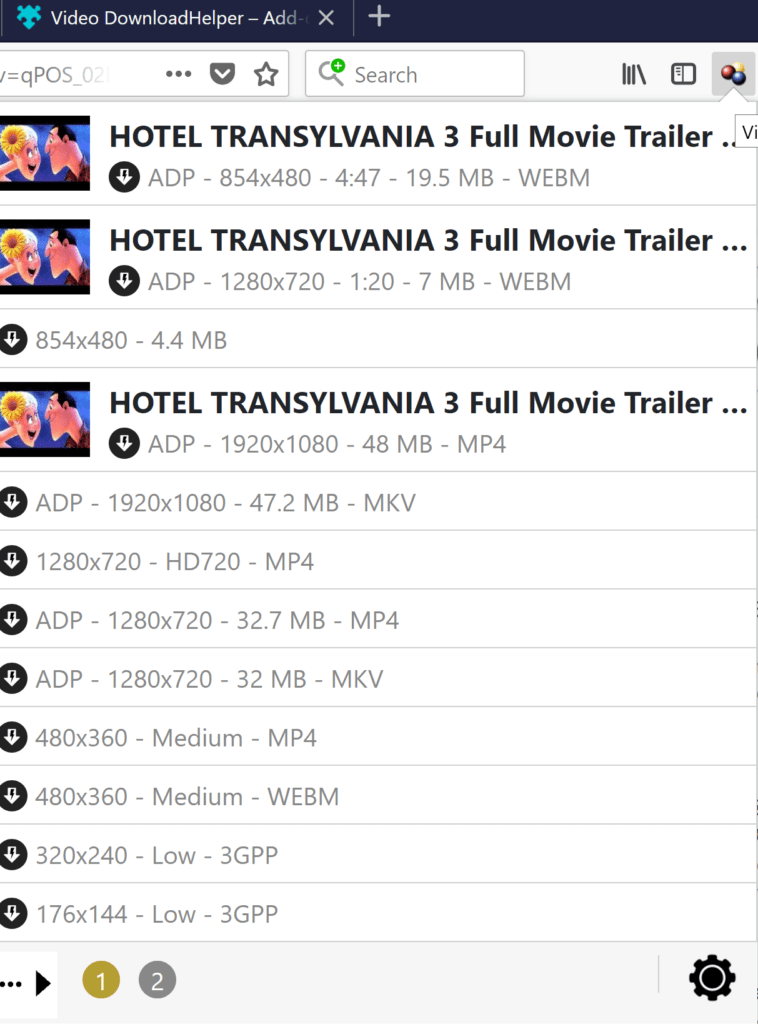
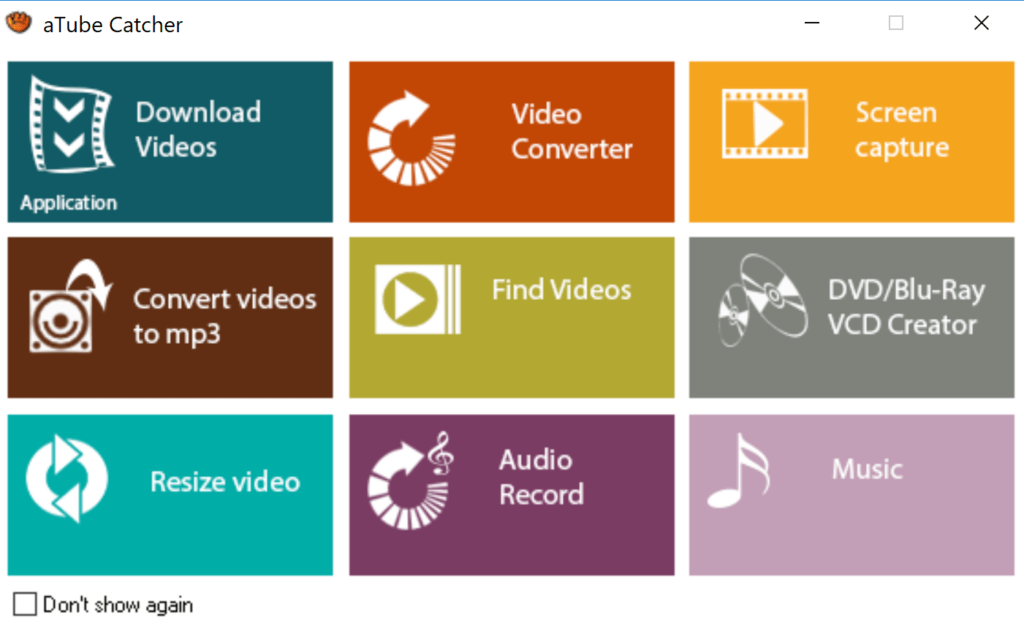
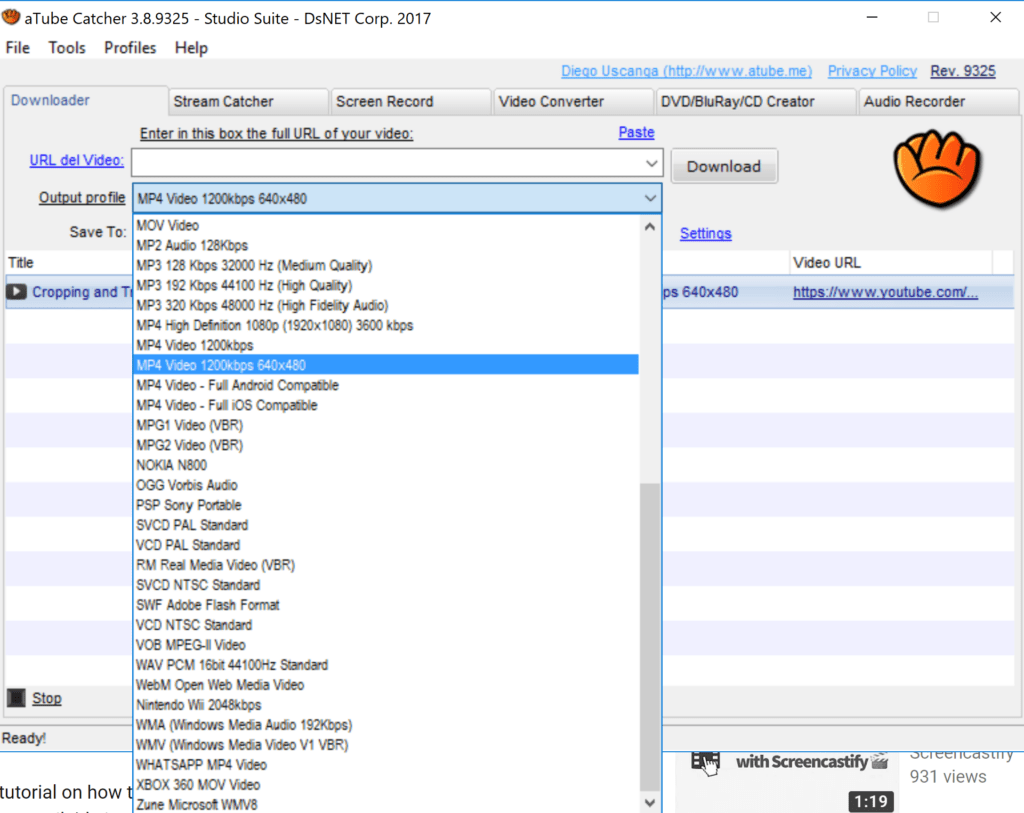



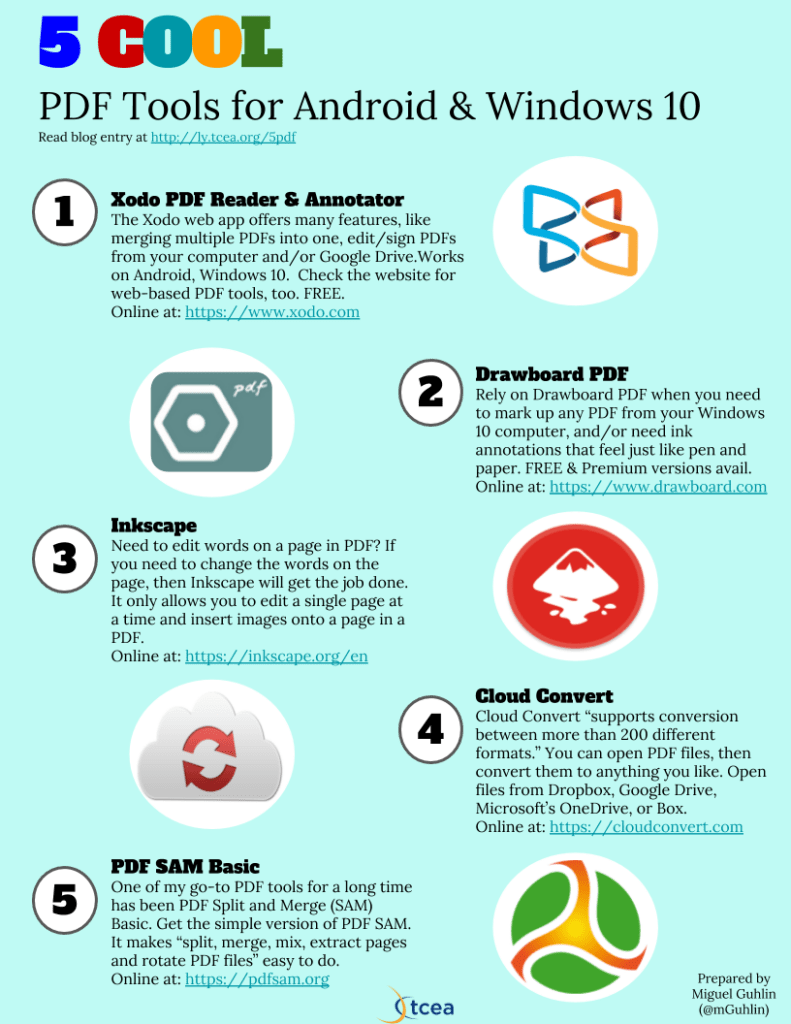
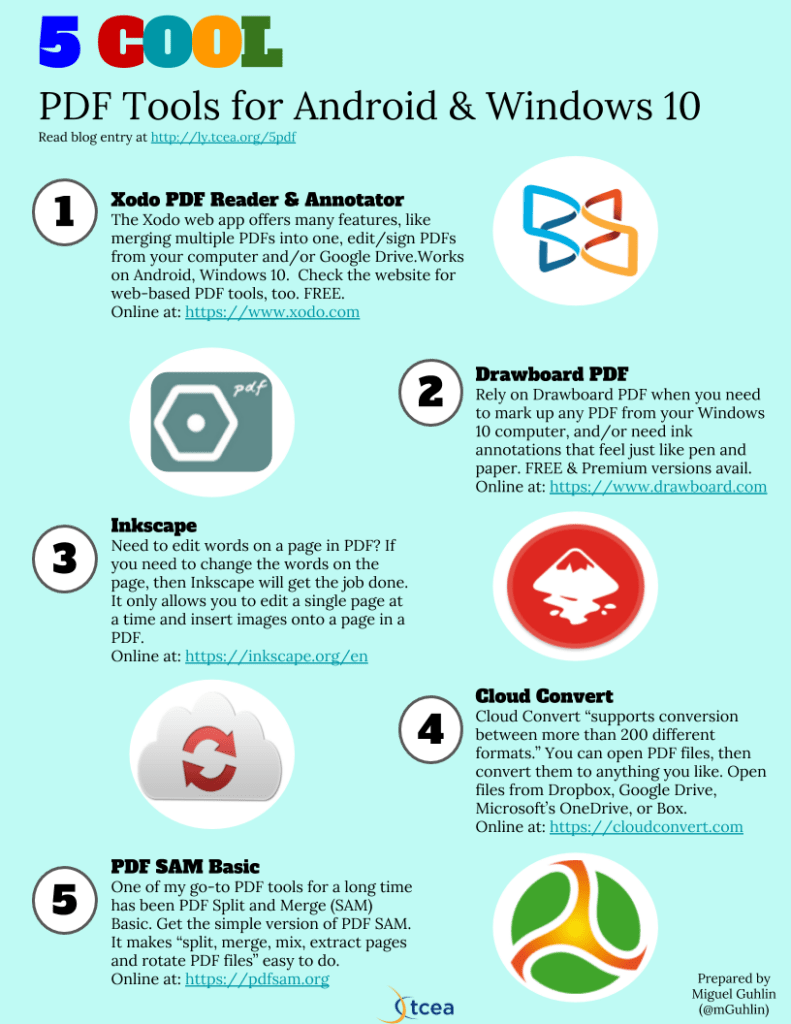
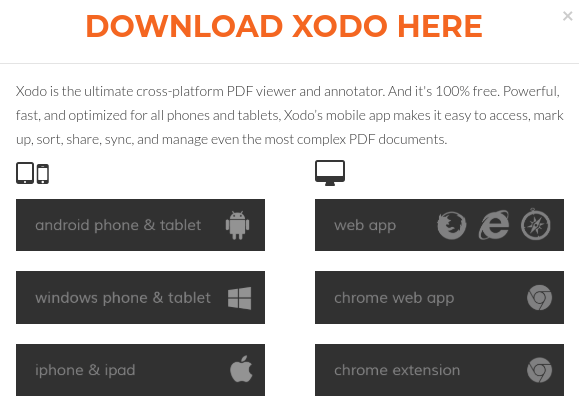 When I found Xodo, I was waiting to board a plane. I had to fill out a PDF form, sign it, and then email it. My Windows 10 device was stowed away; the only device I had was my Android phone. After using Xodo to get the PDF on its way, I made a mental note to see if it was available on Windows 10. Sure enough, you can get Xodo as an app in the Windows 10 Store. In addition to working as a native app on your Android or Windows 10 device, you can also
When I found Xodo, I was waiting to board a plane. I had to fill out a PDF form, sign it, and then email it. My Windows 10 device was stowed away; the only device I had was my Android phone. After using Xodo to get the PDF on its way, I made a mental note to see if it was available on Windows 10. Sure enough, you can get Xodo as an app in the Windows 10 Store. In addition to working as a native app on your Android or Windows 10 device, you can also 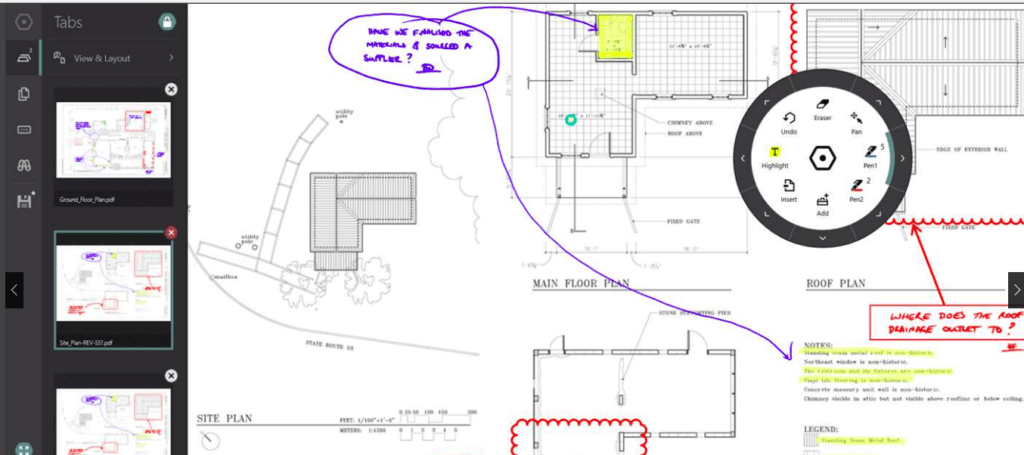 The first time I tried
The first time I tried 